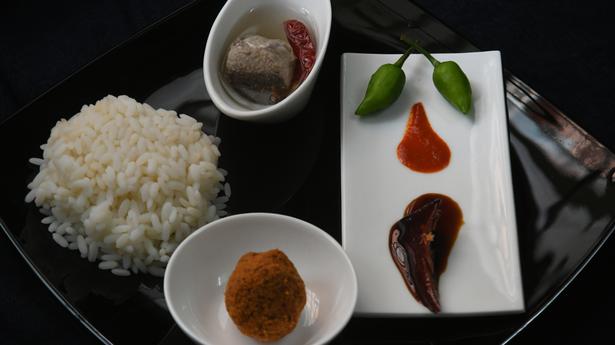
Restaurant in Kochi serves traditional dishes of Minicoy Island
The Hindu
Sukhaina Moosa’s FoodieMeSu brings the distinct, yet little-known cuisine of Minicoy Island of Lakshadweep to the mainstream
“Let’s start with breakfast,” says Sukhaina Moosa, chef and founder of FoodieMeSu, Kerala’s only restaurant serving traditional food from the Lakshadweep islands. Seated at her small, yet well-kept restaurant kitchen in Kaloor, Kochi, Sukhaina explains what constitutes a traditional Minicoy breakfast. “A couple of faratas, which are rectangular maida (refiend flour) paranthas cooked on a pan until golden-brown, with Rairiha, a fiery red fish curry,” she says. At the restaurant, however, she serves Thelulimas (fried fish) too, with the combo. “The people here have been giving me great feedback,” she says.
The rairiha pairs extremely well with the faratas . “It is very similar to Kerala fish curry, in that it has coconut milk, coconut oil, curry leaves and spices, but we don’t use kokum or tamarind in our curries,” says Sukhaina. The delightfully consistent gravy, which contains garlic, onions, coconut milk and lots of chilli powder, is a unique take on fish curry.
Kiraliappam is another popular breakfast item of the islanders — a rice-flour pancake dipped in coconut milk, which is relished with rairiha. Fish, coconut and rice form the core of the cuisine in Lakshadweep; vegetables and meat are not staples. Each of the ten inhabited islands of the archipelago, however, has a distinct culture and cuisine.
Sukhaina’s restaurant brings the little-known, yet rich culinary history of Minicoy to the mainstream. She offers a combination of traditional dishes in addition to a few of her own recipes.
Lying close to Kerala in the mainland, the language, culture and cuisine of the Lakhshadweep islands have many similarities to that of the State; but Minicoy, being at the southern most tip of the archipelago, has drawn greater influences from Maldives and Sri Lanka. “Our food has drawn inspiration from both countries. Even the language we speak, Mahal, is a mix of Arabic and Sinhala.”
All the fish curries are prepared using coconut milk (not ground coconut, Sukhaina clarifies). While Kavabu is a coriander-based curry, Sannathu is a thick semi fish gravy made of a masala consisting of ground vegetables and ajwain. It is garnished with lemon juice and green chillies. “This is usually had with Kirufoli, a crepe made of rice flour and tender coconut,” she says.
A standard meal, known as Garudiya, is a complete platter including soup, rice and side dishes. The soup, also known as Garudiya, is a clear tuna soup, accompanied by Rihakuru, a fish sauce made with sea water and fresh water. “This sauce is cooked for a week continuously, adding fresh fish to the vessel until it turns brown. This sauce, which does not contain any artificial preservative, can stay for years.” The meal also comes with Lonumirus, a salty, chilli paste with garlic and Mas-huni, a dry fish, coconut and green chilly chutney.













